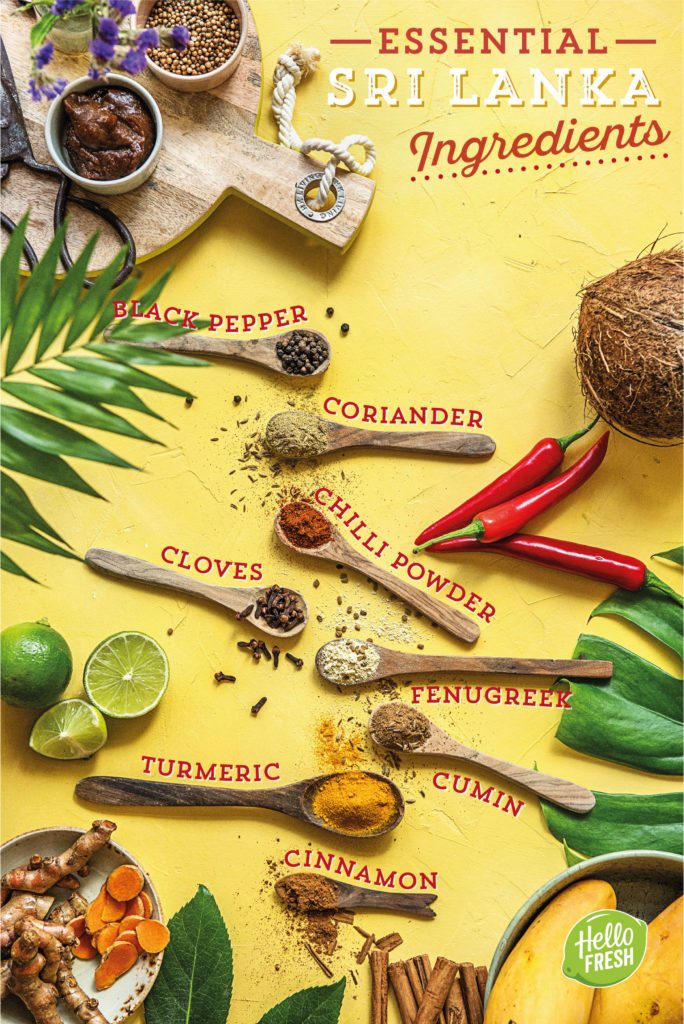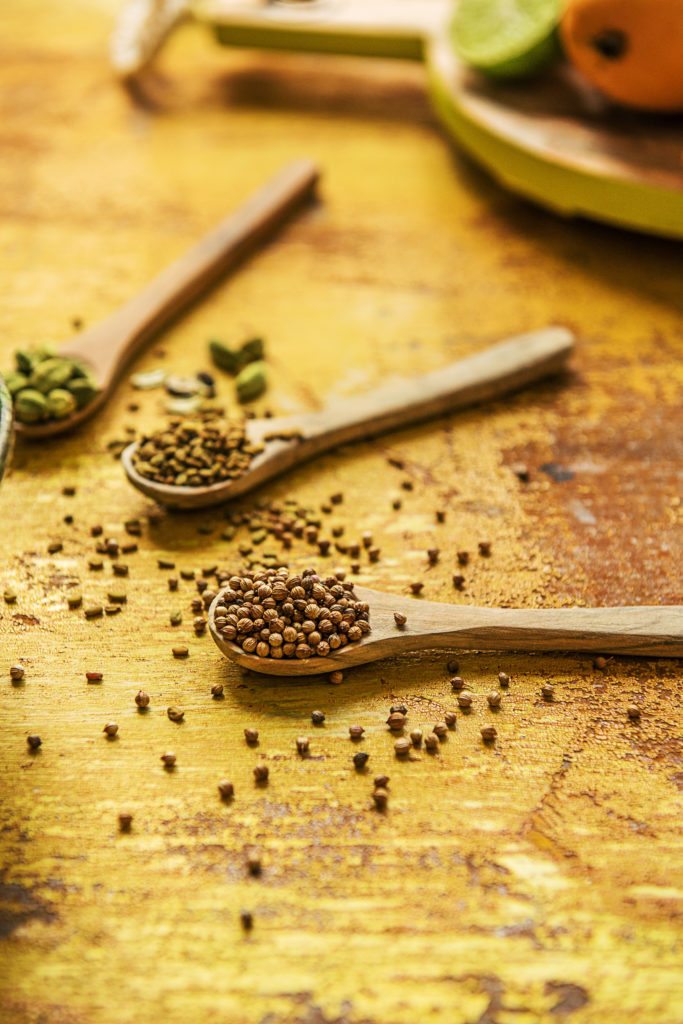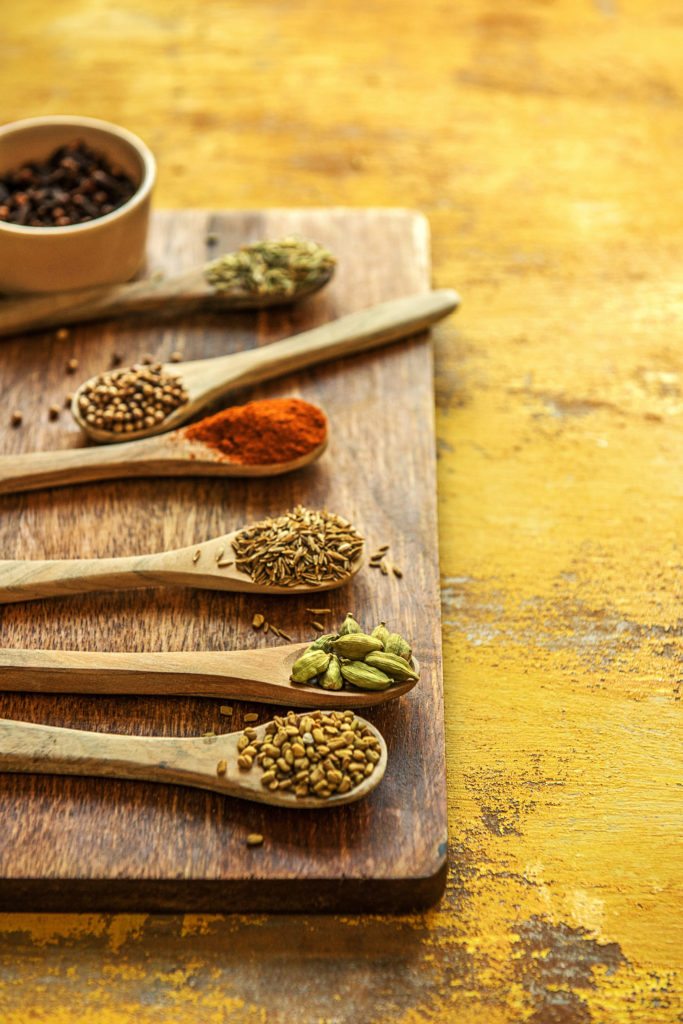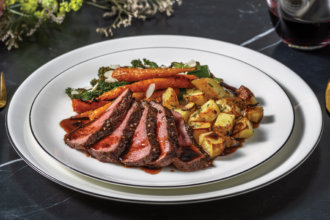The Essential Ingredients for Sri Lankan Cooking
June 23, 2017
Sri Lanka and India may be geographically close, but Sri Lankan cuisine is as unique as the country itself. Characterised by a slightly fiercer and spicier flavour profile, there’s still plenty to love about vibrant curries and rice dishes. Whilst there are common elements that tie the two cuisines together, Sri Lankan food offers a huge array of flavour combinations which makes it such an exciting and adventurous cuisine: sweet caramelised onion chutneys, surprisingly bitter melon, spicy coconut, and burnt spiced curries, balanced out with a big bowl of steaming rice.
The flavour pillars of Sri Lankan cuisine are rice, coconut, and native tropical fruits and vegetables. The island farms 15 different varieties of rice and produces 2.7 million tonnes of rough rice annually. Other than being a vital accompaniment to the traditional Sri Lankan ‘rice and curry’ dishes, rice is the key ingredient in the island’s famed rice flour pancakes (‘hoppers’) and rice noodles (‘string hoppers’).
Spice It Up In The Kitchen
For meat and poultry, spices should be roasted and ground to give more strength and taste to the curries.
Vegetables and seafood are often more delicate in flavour. Therefore, spices should be used sparingly to avoid overpowering. Using little or no curry powder for spices ensures that the natural flavour of the vegetables and seafood are retained. Use flavours such as tamarind to enhance the juiciness of a fish curry.
Chilli powder and curry powder should be stored in airtight containers to prevent them from loosing their flavour.

The Essential Ingredients of Sri Lankan Cuisine
Tamarind
Cooking a fish curry? This is the one. Take it out the shell and soak it in a bit of water – then add the water and tamarind to the sauce. Nice and tangy!
Coriander
Coriander seeds are essential. One of Trisha’s favourite childhood dishes is rassam – it’s a brothy soup with lots of garlic, ginger and coriander seeds. Great for when you’re feeling a little under the weather. Mangalorean chicken curry and Tamil chicken sothi are packed with coriander seeds, and are seriously delicious.
Whole Black Pepper
The black peppercorn which is used in Indian cooking, is a dried berry from the pepper plant. It is one of the most important ingredient in making curry powder. Be sparing when you use it – it can give a hot burning taste to your curries. Peppercorns are often kept whole when used as a flavouring for rice.
Chilli Powder/ Fresh Chillies
Over 60 different types of chillies are grown in Sri Lanka. Most Sri Lankan dishes range in their spiciness depending on how much fresh or dried chillies have been added. Green chillies are often used when making salads, pickles and chutneys, whereas red chillies are often used in dried form.
Cloves
Many parts of Sri Lanka add cloves to their rice, like pilaf, to flavour it when it’s cooking. You can flavour your curries by frying cloves in the coconut oil or ghee.
Fenugreek Seeds
This may be one of the lesser known spices. There are lots of Indian dishes with the Hindu word “Methi” in. And surprise surprise, Methi is translated into English as fenugreek. It’s used in countless dishes from dhals to chicken curries. This one’s going to be your new best friend!
Cumin Seeds
Cumin seeds have a strong aroma and flavour and can be used whole or ground. Along with coriander it is one of the most essential ingredients in Sri Lankan cuisine. Although cumin physically resembles caraway seed, it is different in taste and aroma to the caraway seed.
Cinnamon
Great in full stick in a pilaf rice. Also – you guessed it – it’s another one of the key ingredients in garam masala.
Curry Leaves
This tree is native to Asia. The leaves are smaller than bay leaves and shiny. Generally fresh curry leaves are used in curries to create a rich depth of flavour. Curry leaves are very fragrant and can be fried in the initial stages of a curry or put in at the simmering stage. They can also be added at the final stage to bring out the maximum flavour
Lime
Fresh lime juice is the perfect thing to squeeze over a spicy Sri Lankan dish to give it a fresh twist.
Turmeric
Turmeric is an aromatic powdered root of a plant grown in the West Indies and India. It is used mainly used in recipes to create the burnt orange colour we are so familiar with in Sri Lankan cuisine, but has traditionally been used as a natural antiseptic.
Fresh Coconut
Classic in South Indian dishes. South Indians and Sri Lankans like to use the whole coconut – the oil, the water, the flesh.

Hungry for more curries? We’ve got you covered.







